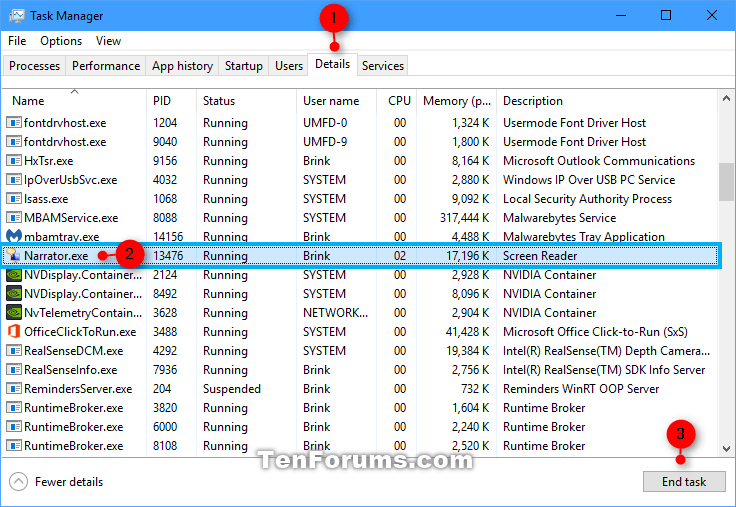

It opens applications by name, works with Microsoft Power BI to provide on-the-fly data analytics (revenue for the last two quarters, average customer spending by location, etc.), handles calendar appointments and processes fairly complex requests for reminders (for example “Remind me when I’m near to buy printer paper”).Īlthough Cortana is super handy, its chattiness can be disruptive to co-workers within earshot and isn’t conducive to certain business environments. Cortana is a powerful search tool for both the local device and Web. It’s also available as an app in Windows Phone, iOS and Android.
#Turn off narrator windows phone windows 10
Cortana, the personal assistantĬortana is the voice-driven personal assistant feature in Windows 10 that ratchets up the productivity level of business users in the office or on the go. This article looks at ways to wrangle Cortana, Windows Hello, Microsoft Edge and Windows Store settings, whether that means restricting parameters for more control or disabling them outright. And by using Group Policy or mobile management device (MDM) settings, an administrator can set a policy setting and then copy it for multiple users, computers or devices, greatly reducing administrative effort. Fortunately, each feature or app lends itself to a good amount of tuning to fit the needs of both users and organizational policies.
#Turn off narrator windows phone full
That is how you enable or disable Narrator in Windows 11.Windows 10 is full of great functionality for the enterprise, but not every environment is suitable for everything Windows 10 has to offer. Click OK to save changes and enable Narrator in Windows 11.Place a checkmark next to Turn on Narrator.Alternatively, click the Use the computer without a display link.If you use the "Small icons" or "Large icons" category, simply click Ease of Access Center.Go to Ease of Access > Ease of Access Center.Press Win + R and enter the "control" command to open the Control Panel.Turn on Narrator using the classic Control Panel Open the Accessibility section, then click Narrator.There are other methods to launch Windows Settings you can learn in our dedicated article. Alternatively, press Win + X and click Settings. Enable Narrator in Windows 11 with Settings You can also turn on Narrator in Windows 11 from the Settings app, where the operating system keeps all Narrator-related options. Well, the Quick Settings menu provides just a basic on/off Narrator switch without additional settings. In fact, in Windows 11, all three are a single button. Tip: You can also open the Quick Settings menu by clicking one of the following icons in the notification area: battery, network, or volume. Enable the Narrator option to turn on the default screen reader in Windows 11.It opens a list of the most used accessibility tools in Windows 11, such as Sticky Keys, Magnifier, Color filters, and Narrator. Press Win + A to open the Quick Settings menu.Enable Narrator in Windows 11 with Quick Settings Also, we have a list of useful hotkeys that you can use in Narrator.

Note: If you have a hard time using shortcuts, consider turning on Sticky Keys. The same key sequence disables Narrator in Windows 11. The shortcut works in every Windows installation regardless of the SKU.

To enable Narrator with a keyboard shortcut, press Win + Ctrl + Enter.
:max_bytes(150000):strip_icc()/008-how-to-turn-off-narrator-in-microsoft-e4e7defc15ac4eef87dbdfe5308c7c04.jpg)
Shortcuts allow turning on or off available accessibility settings without navigating various UIs and complex menus. Narrator and other accessibility tools in Windows should be easily accessible, which means most of them have dedicated shortcuts. Let's review each of the methods in detail. You can enable Narrator with a special keyboard shortcut, in Quick Settings, in the Settings app, and finally in the classic Control Panel. Turn on Narrator using the classic Control Panel Enable Narrator in Windows 11


 0 kommentar(er)
0 kommentar(er)
